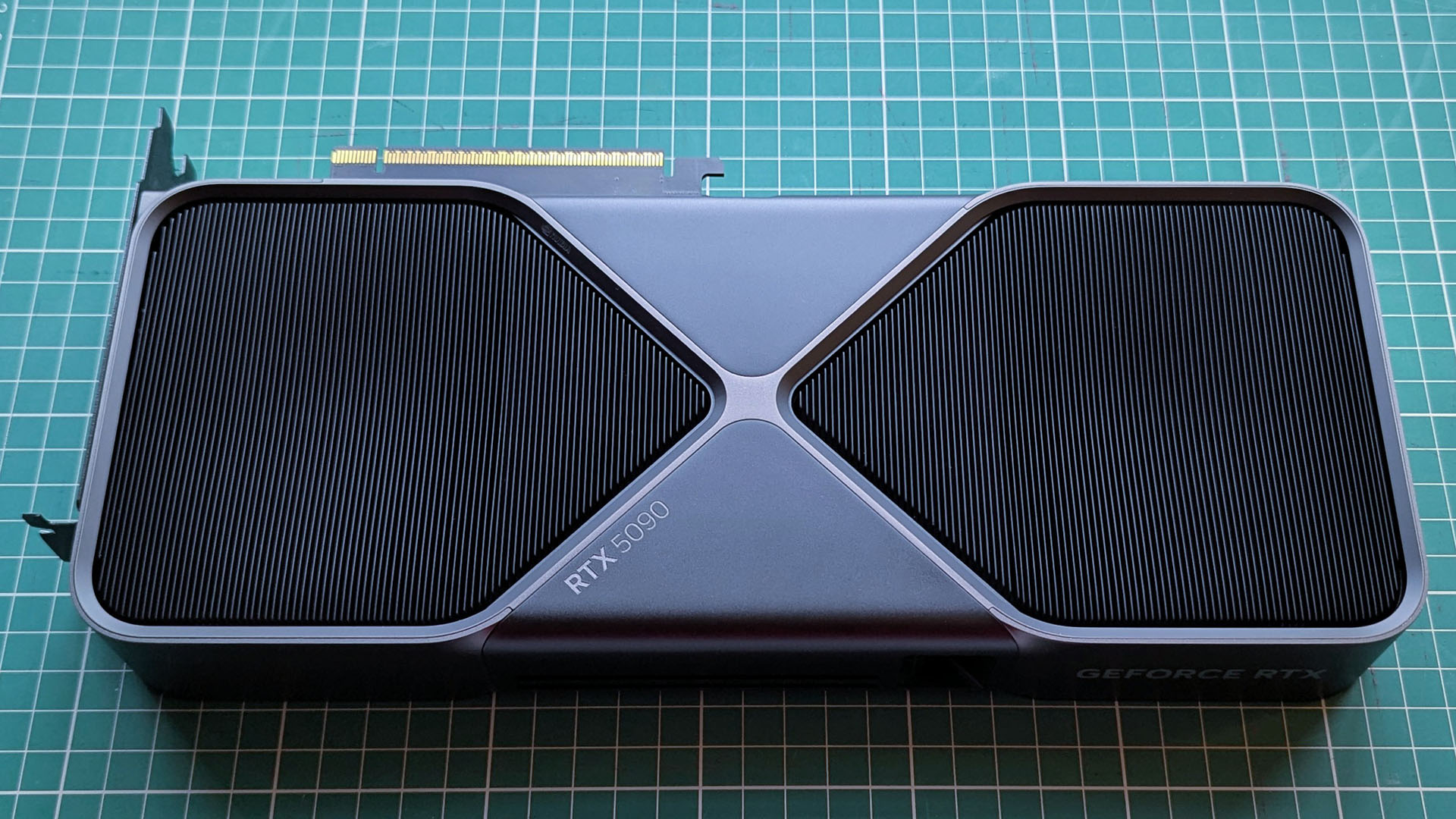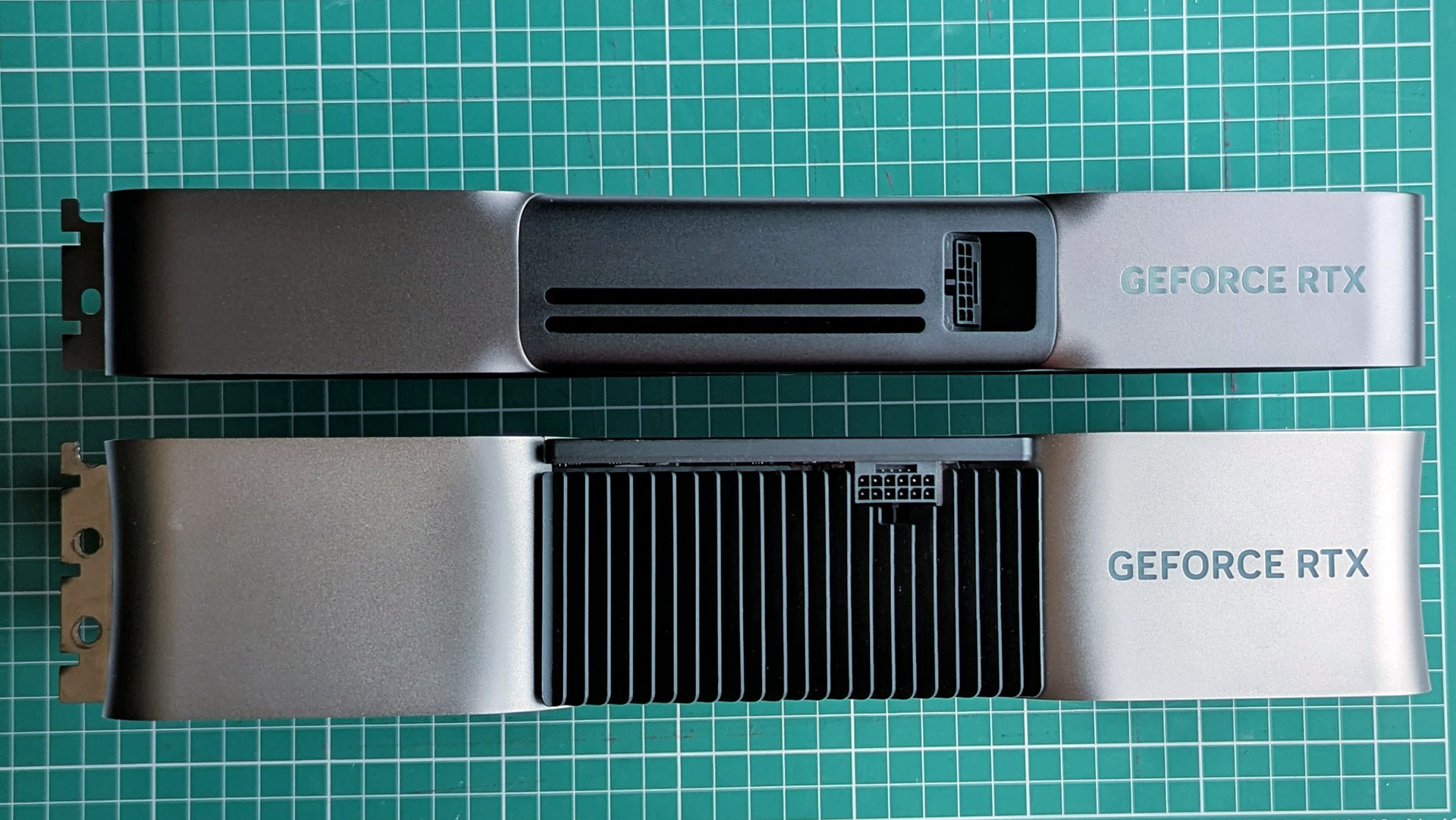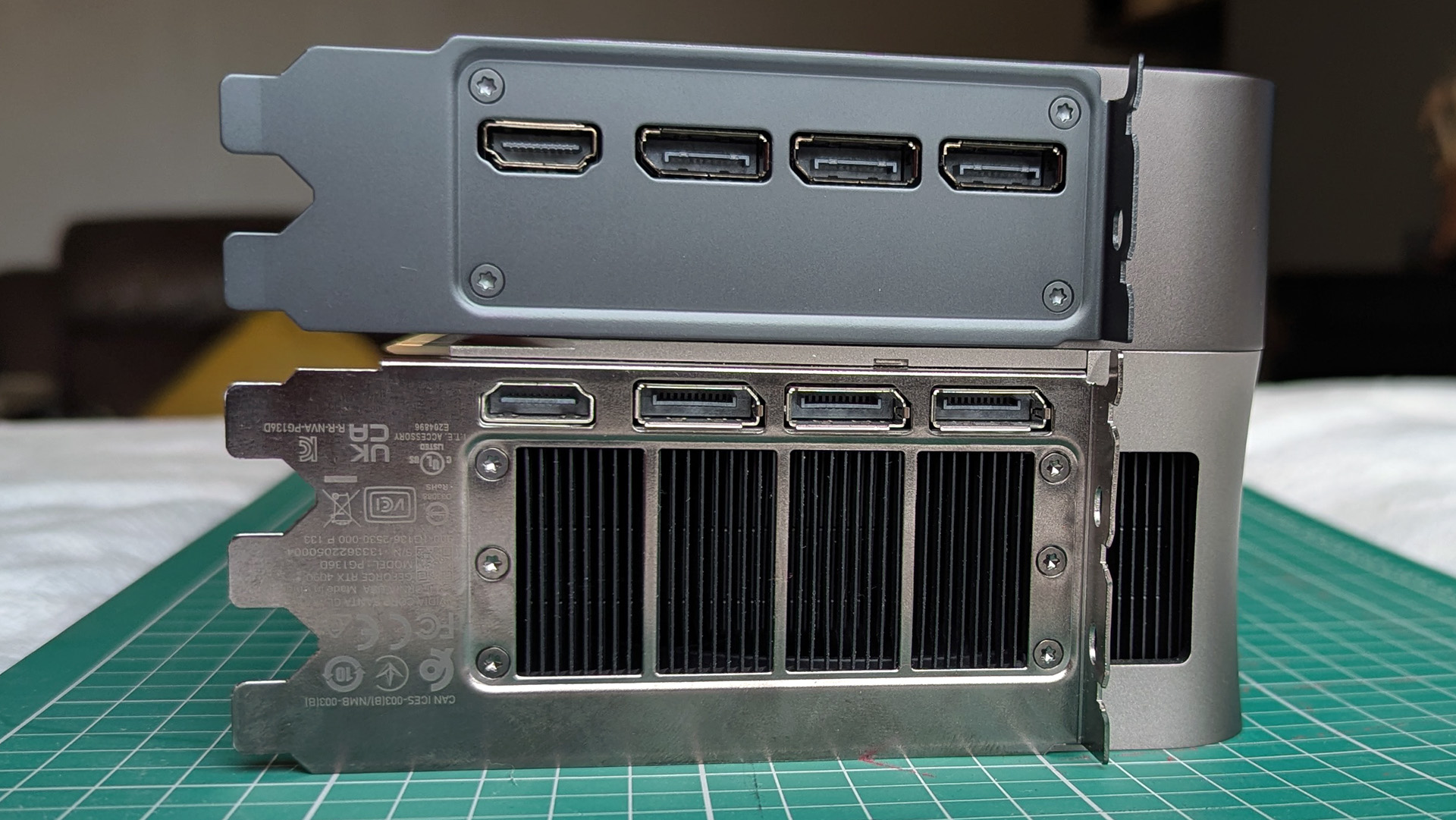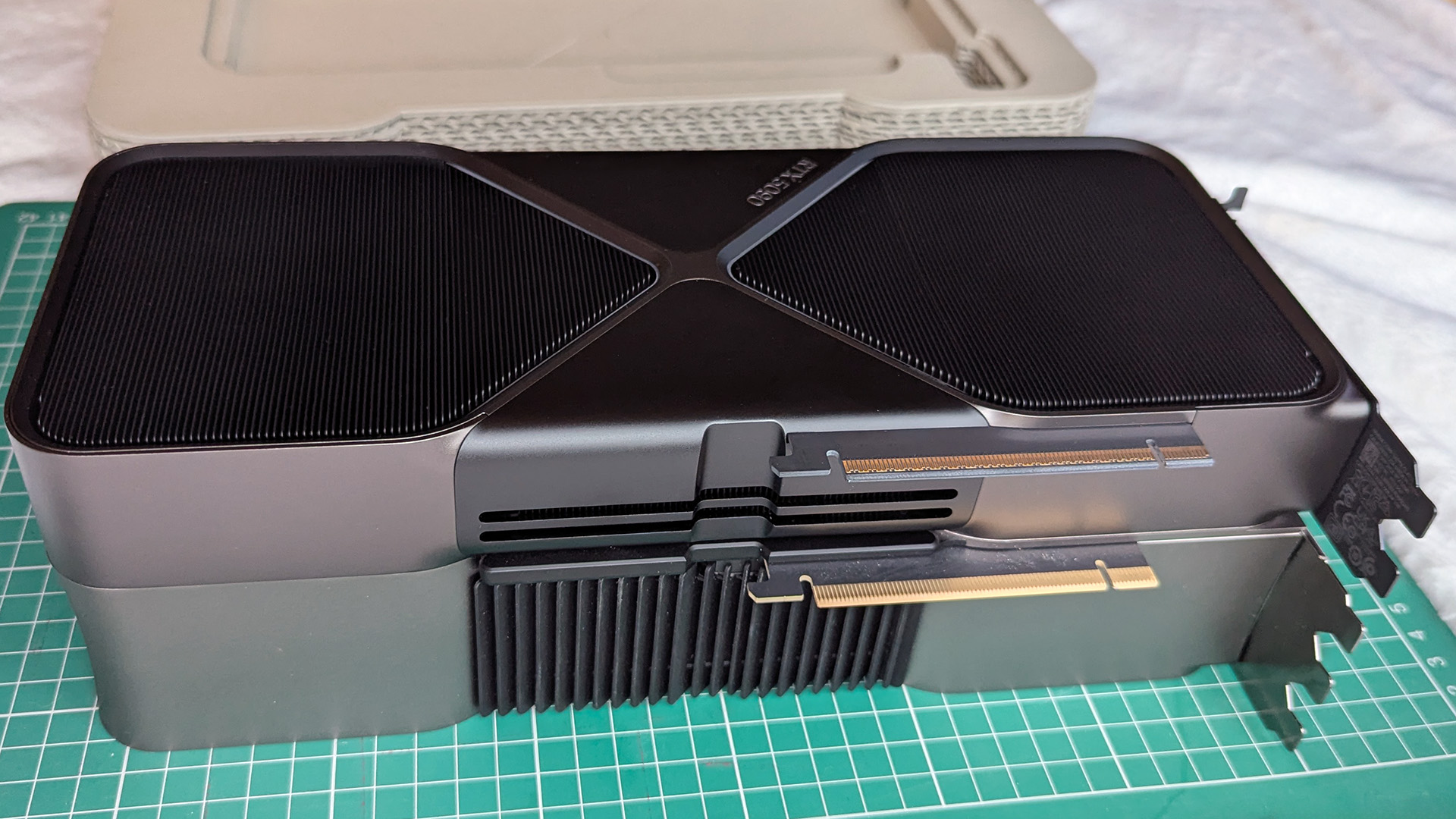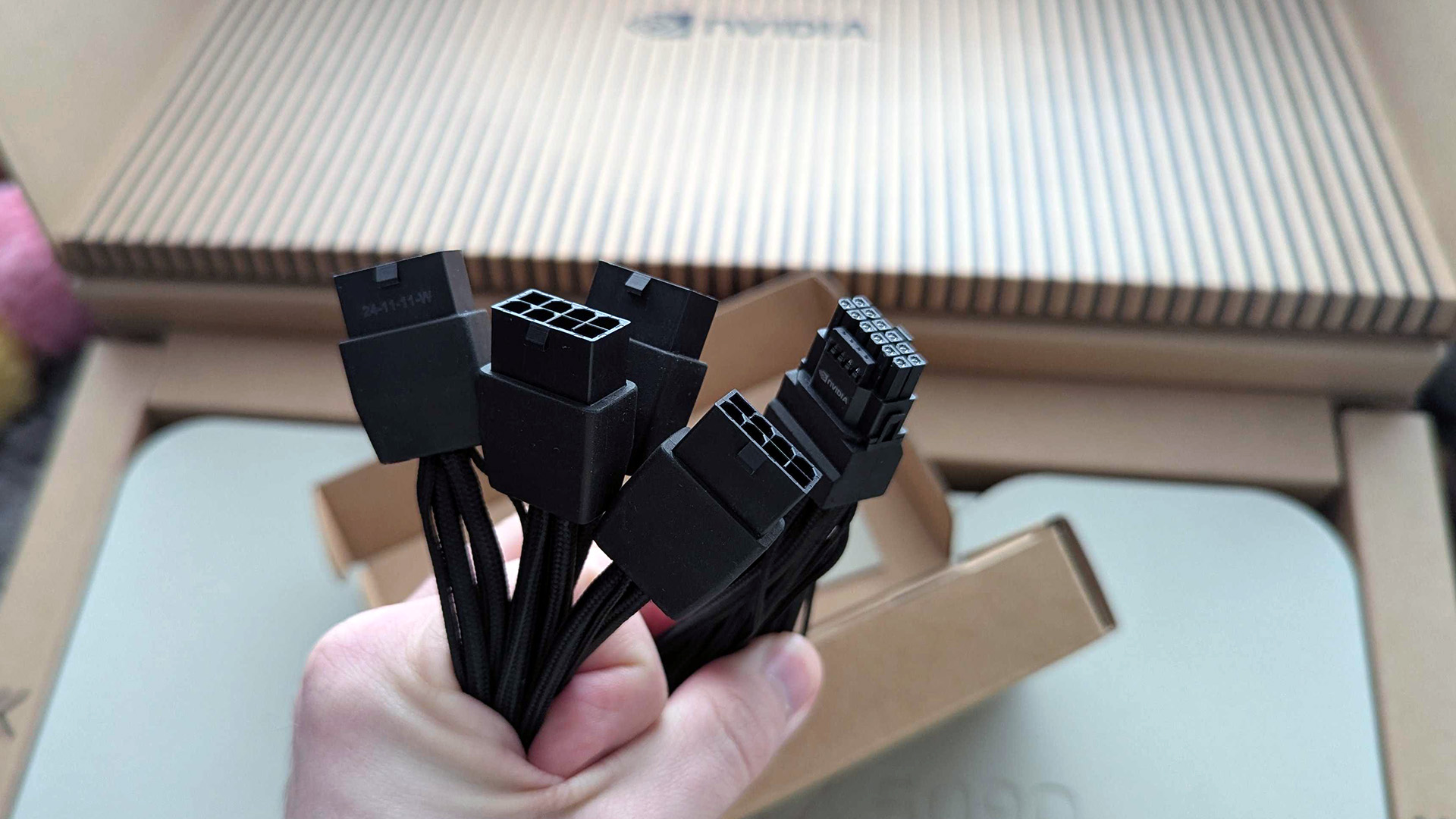After months of RTX 5090 speculation around NVIDIA and endless memes of its next-gen graphics cards showing air conditioning-sized cooling fans, I finally have proof that the latest flagship GeForce GPU opts for the contrary. Measuring around 50% the width of its RTX 4090 Founders Edition predecessor, the new RTX 5090 FE shrinks to a two-slot configuration but retains the exact edge-to-edge shape.
Of course, one of the most glaringly obvious changes to the RTX 50 Series reference card design is NVIDIA’s introduction of its “Double Flow Through” cooling design, with twin fans mounted on the same side of the card. The heatsink fin pattern is still here, albeit in more of a cut-back design, alongside a huge reduction in branding sizes as the printed ‘RTX 5090’ logo is tucked away on the reverse side.
Overwhelmingly, my thoughts go to how this slim redesign will affect the cooling potential of NVIDIA’s new fan system alongside the beefed-up internals. I’ll have to keep you in the dark on that matter, at least for a while, because a non-disclosure agreement (NDA) only allows for today’s unboxing tease. Nevertheless, I’m instantly enamored by this refreshing design for the RTX 5090, finishing its metallic casing with a smooth coating.
It’s also 16.51% lighter than the RTX 40 Series flagship, weighing 1.82 kg (4.01 lbs) compared to the 2.18 kg (4.80 lbs) of the RTX 4090 FE. That’s still heavy enough to warrant a sag mount for your PC case and save your motherboard’s PCIe slot from unnecessary stress, but the 600W power 12V2x6 cable at least connects at an angle now, reducing the risk of damage from over-bending.
RTX 5090 vs. RTX 4090 side-by side
Sure enough, the RTX 5090 FE looks good on its own, but the improvements are abundantly clear with generational comparisons. Stacked next to the GeForce RTX 4090 Founders Edition, the two-slot RTX 5090 FE looks almost unrecognizable from above. Here, you can see the angled power connector and its flipped video-out ports on the rear mounting side. Still, more than anything else, there’s a huge reduction in ventilation alongside the DisplayPort and HDMI connections.
There are two undeniable elephants in the RTX 5090 room, one named “price tag” and the other “power draw,” and it’s not surprising to see a monstrous PCIe adapter in the box demanding a four-split hookup with some of the most power supply units on the market today. I already have a melt-free 450W 12VHPWR cable for my 1300W unit, but that’s not going to cut it with NVIDIA’s latest beast. 600W or bust, I’ll need to dig out my big bag of cables.
Speaking of the box, everything is made from paper and cardboard in an Apple-esque fashion. It’s great to see, though I’ll miss having a spare anti-static bag to store other GPUs while I’m testing the RTX 5090. Sustainability is the name of the game for packaging in 2025, something we even handed out an award for at CES 2025, and it’s great to see NVIDIA adapting.
While I could pretend to speculate performance metrics, I’d rather keep you in legally sound suspense for just a little longer. For now, consider me a fan of the GeForce RTX 50 Series design. My electric bill, on the other hand, is beginning to sweat. Whether it’s worth upgrading from my usual RTX 3060 12GB daily driver remains to be seen, but this slick design is certainly tempting me away from uglier GPUs built by third-party brands.


